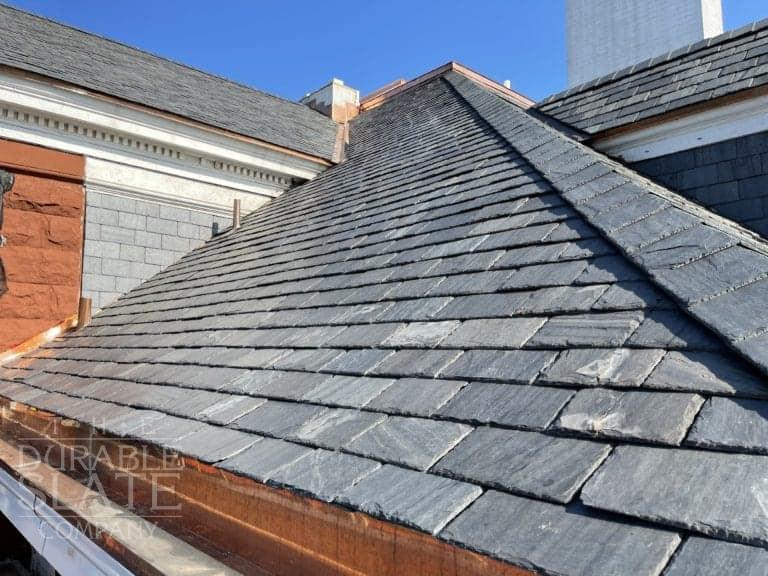Ideal Practices for Ensuring Proper Roof Air Flow
Guaranteeing appropriate roof air flow is critical for the durability and efficiency of a roof covering system. A balanced consumption and exhaust vent ratio, frequently 1:300, plays a critical role, with consumption vents ideally placed at the lower edge of the roof for awesome air entrance and exhaust vents at the height for warm air exit. Regular evaluations to recognize blockages and keep clear airflow are critical. Keeping insulation away from vents is important to stop air movement constraint. Recognizing these foundational aspects establishes the phase for more detailed insights into installment and upkeep techniques that can considerably improve your roof's performance.
Understand Air Flow Basics
Effectively understanding air flow basics is vital for ensuring the durability and effectiveness of roof. Efficient ventilation alleviates dampness build-up and temperature extremes in the attic room, both of which can result in substantial architectural damages with time. A well-ventilated roof covering aids in stopping usual concerns such as mold and mildew growth, wood rot, and ice dams, which can endanger the stability of the roof covering products and the underlying frameworks.
The key objective of air flow is to help with the movement of air, allowing for a regular exchange in between the exterior and interior environments. This balance is accomplished via a combination of intake and exhaust vents that collaborate to maintain optimal air movement. Intake vents, normally located along the eaves or soffits, allow fresh air to get in the attic room, while exhaust vents, typically situated at or near the roofing system ridge, allow hot, damp air to run away.
Key aspects influencing the effectiveness of roof covering ventilation include correct placement, adequate sizing, and guaranteeing that both consumption and exhaust vents are unhampered. Normal evaluation and upkeep are essential to recognize potential blockages, damage, or inefficiencies in the air flow system, therefore safeguarding the roof's efficiency and resilience.
Kinds of Roof Vents
Roofing vents play an important role in keeping reliable attic room ventilation and, by extension, the overall wellness of the roof. Different kinds of roof vents are readily available, each with unique advantages tailored to particular roof requirements. Ridge vents, for example, are installed along the roofing's peak, enabling cozy, humid air to run away from the attic room. They supply continuous ventilation and blend effortlessly with the roofline, making them both effective and aesthetically pleasing.

Soffit vents are installed under the eaves and operate in tandem with roofing vents to make certain a well balanced consumption and exhaust system. By allowing cooler air to go into from below, soffit vents assist in the expulsion of warm air via upper vents. Gable vents, located on the outside walls of the attic, offer click to read an additional reliable solution, particularly in homes with gable roof coverings.
Analyze Your Present Air Flow

Next, think about the age and condition of your roof products and ventilation parts. Older systems may not adhere to present building ordinance or might have deteriorated over time, reducing their effectiveness. Conduct a thorough assessment to identify any kind of signs of wear and tear, such as rust, damages, or spaces that can jeopardize the system's efficiency.
Furthermore, determine the attic room temperature and humidity levels. High temperatures and moisture can indicate inadequate air flow.
Installation Best Practices
Efficient setup of roof air flow systems is extremely important for ensuring optimum performance and durability. Proper installation starts with recognizing the certain ventilation requirements of the roof covering and the structure it covers. This includes calculating the correct proportion of consumption to wear down vents, usually sticking to the 1:300 policy, which states one square foot of ventilation for each 300 square feet of attic room floor area.

Intake vents ought to be set up at the roof's lower edge, frequently in the soffits, to enable trendy air to go into. Exhaust vents, on the various other hand, must be installed near or at the roofing's top to help with the departure of cozy, damp air.
Seal all air vent connections thoroughly to avoid air leaks and possible water infiltration. Usage premium products and adhere to producer standards to guarantee sturdiness and efficiency. In addition, incorporating ridge vents with baffles can substantially improve air movement efficiency by preventing helpful hints wind-driven rainfall and snow from entering the attic room.
Ultimately, exact setup of roof covering ventilation systems alleviates potential issues such as mold development, ice dams, and architectural damage, ensuring the roofing system's honesty and the building's overall wellness.
Routine Upkeep Tips
Uniformity in maintenance techniques is basic to making certain the long-lasting performance of roof air flow systems. Regular assessments are crucial, ideally executed biannually-- in the springtime and autumn. During these inspections, make sure that vents are devoid of particles, nests, and various other obstructions that can hamper airflow. Look for any type of indicators of dampness build-up or mold and mildew, as these can indicate improper ventilation or leaks (roofing companies).
Cleaning up the vents is one more crucial job. Utilize a soft brush or a vacuum to eliminate dust and particles from intake and exhaust vents. Be cautious not to damage the vent displays or louvers throughout the process. Furthermore, check the attic room area for any signs of water damage, which could endanger the integrity of the roof covering system.
Proper insulation is equally crucial. Guarantee that attic room insulation does not obstruct the vents, as this can significantly limit airflow. If any kind of insulation has shifted or settled, rearrange or replace it to maintain an effective obstacle.
Finally, change any type of harmed or missing parts promptly. Broken vents, broken tiles, or shabby blinking can all contribute to inadequate ventilation and needs to be dealt with right away. Regular maintenance makes certain that the roof covering ventilation system works optimally, thereby extending the life expectancy of the roofing itself.
Final Thought
Guaranteeing correct roof air flow is vital for preserving the efficiency and resilience of a roofing system. Adherence to the 1:300 intake and exhaust air vent proportion, paired with the strategic placement of vents, is vital.
A well balanced intake and exhaust air vent ratio, typically 1:300, plays an essential role, with intake vents ideally placed at the lower edge of the roof for great air entrance and exhaust vents at why not try these out the top for cozy air departure. Consumption vents, typically located along the eaves or soffits, allow fresh air to get in the attic room area, while exhaust vents, frequently positioned at or near the roofing system ridge, enable hot, humid air to get away.
Soffit vents are installed under the eaves and job in tandem with roof vents to make sure a balanced intake and exhaust system. By enabling cooler air to get in from below, soffit vents assist in the expulsion of warm air with upper vents. Adherence to the 1:300 intake and exhaust air vent ratio, paired with the calculated positioning of vents, is essential.
 Andrea Barber Then & Now!
Andrea Barber Then & Now! Jennifer Love Hewitt Then & Now!
Jennifer Love Hewitt Then & Now! Kenan Thompson Then & Now!
Kenan Thompson Then & Now! Barbi Benton Then & Now!
Barbi Benton Then & Now! Heather Locklear Then & Now!
Heather Locklear Then & Now!